#Liao Pen-jung
Text

I DON'T WANT TO SLEEP ALONE
[Tsai Ming-liang 2006]
#黑眼圈#tsai ming liang#asian cinema#malaysian film#taiwanese film#great directors#Hei yanquan#i don't want to sleep alone#lee kang sheng#liao pen jung#great cinematography
15 notes
·
View notes
Text










"Shouldn't we just give up?"
青少年哪吒 (Rebels of the Neon God), 1992.
Dir. & Writ. Tsai Ming-liang | DOP Liao Pen-jung
27 notes
·
View notes
Photo
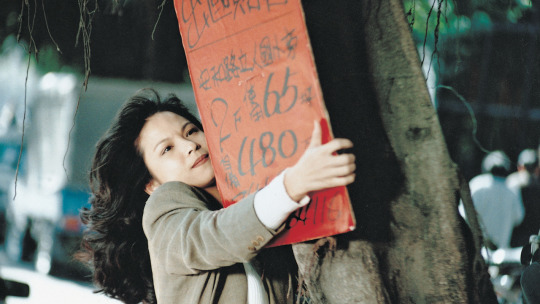
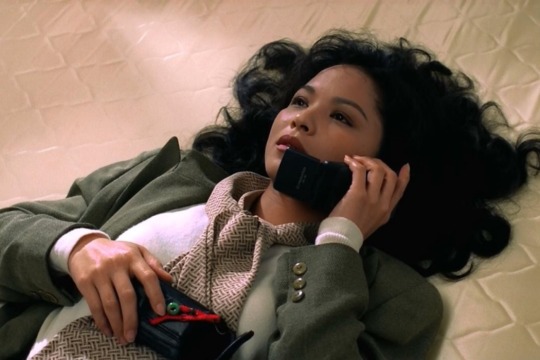
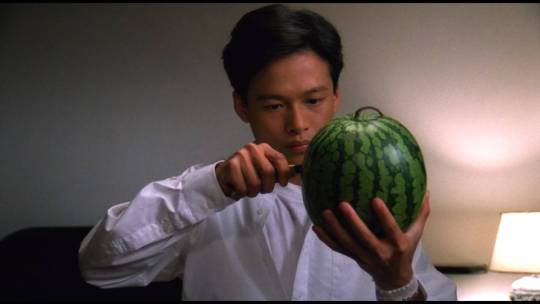
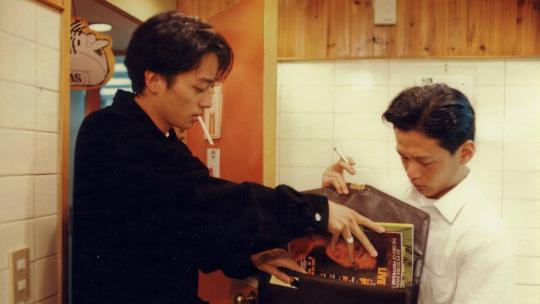
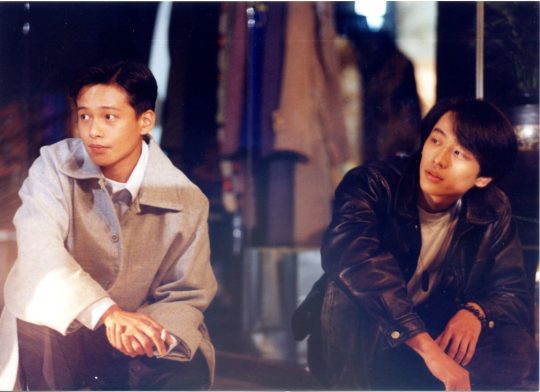

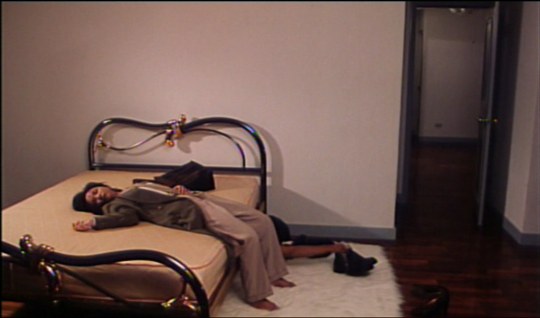
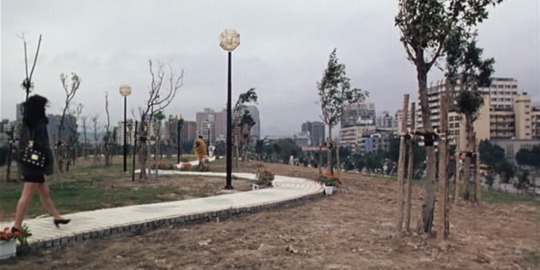

Vive l’Amour (Tsai Ming-liang, 1994)
Cast: Chen Chao-jung, Lee Kang-sheng, Yang Kuei-Mei. Screenplay: Tsai Ming-liang, Tsai Yi-chun, Yang Pi-ying. Cinematography: Liao Pen-Jung, Lin Ming-Kuo. Production design: Lee Pao-Lin. Film editing: Sung Shia-cheng.
Vive l’Amour, the ironic title of Tsai Ming-liang's film, brings to mind another French phrase: comédie larmoyante. And not just because it ends with a very long close-up of the character May Lin (Yang Kuei-Mei) sobbing bitterly, but because the film is its own kind of tearful comedy, one with roots in the genre of farce, in which characters occupy a common space but somehow avoid making connection with one another. It's a story about existential loneliness. Ah-jung (Chen Chao-jung) is making his rounds in the gloomy job of funerary urn salesman when he finds a key left in the lock of a vacant luxury apartment. He sneaks in at night planning to commit suicide, but only makes a half-hearted attempt at cutting his wrist with a Swiss army knife and bandages himself up. Then he realizes that he's not alone in the large apartment when he hears a couple having sex in another room. They are May Lin, the real estate agent supposed to be showing the apartment to clients, and Hsiao-kang (Lee Kang-sheng), who have picked each other up in a restaurant. Hsiao-kang, who illegally sells women's dresses on the street, steals her key to the apartment and moves in. Eventually, Ah-jung and Hsiao-kang encounter each other and become friends. But their friendship is tested when May Lin and Hsiao-kang return to the apartment, and Ah-jung, hearing them enter, hides under the bed. As the couple have sex, Ah-jung masturbates below them. After May Lin leaves, Ah-jung gets in bed with the sleeping Hsiao-kang and stares at him longingly, then kisses him. May LIn, having discovered that her car won't start, sets out to walk home but winds up weeping on a park bench. The story of the three is intercut with glimpses of their lonely lives: May Lin waiting patiently for clients that don't show, Ah-jung distributing leaflets advertising his urns, Hsiao-kang trying on one of the dresses he peddles. There's no music score and very little expository dialogue, but the sound track is alive, from the noise of love-making Ah-jung hears from another room to the pock-pock-pock of May Lin's heels as she sets out on her long walk homeward. We don't know why May Lin weeps, or what drives Ah-jung to consider suicide, but by showing the texture of their isolated lives, Tsai makes us intuit the causes.
7 notes
·
View notes
Photo

#Tsai Ming-liang#蔡明亮#愛情萬歲#Vive L'Amour#1994#Taiwanese New Wave#Liao Pen-jung#Lin Ming-kuo#taiwanese film#cinema#movie#Lee Kang-sheng#bed#lying in bed#solitude#loneliness#psychological drama#slow cinema#romance#lgbt
765 notes
·
View notes
Photo



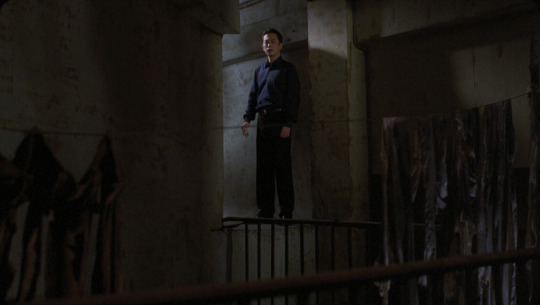
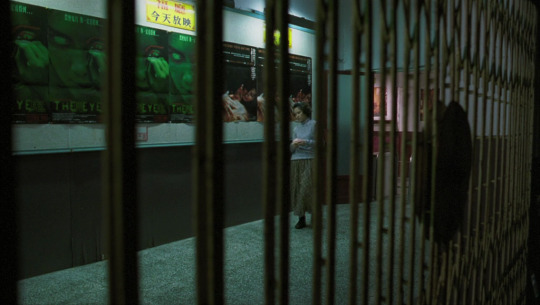





Films watched in 2021.
136: Good Bye, Dragon Inn (Tsai Ming-liang, 2003)
★★★★★★★★☆☆
#Films watched in 2021#Tsai Ming-liang#ocho#2003#tsai ming liang#Good Bye Dragon Inn#bu san#lee kang sheng#Lee Kang-sheng#Liao Pen-jung#drama#loneliness#taiwan#cinema#long shot#dragon inn#king hu#Chen Shiang-chyi#Kiyonobu Mitamura#Miao Tien#Chun Shih#Yang Kuei-mei#smoke#neon lights
434 notes
·
View notes
Photo










“One day it started raining… it rained non-stop. It rained so hard that water got in. The house started crying… and crying… Can’t you see the tears?”
Stray Dogs (2013, Tsai Ming-Liang)
cinematography by Liao Pen-jung, Lu Ching-hsin, and Shong Woon-chong
#stray dogs#tsai ming-liang#cinematography#lee kang-sheng#lu yi-ching#chen shiang-chyi#yang kuei-mei#lee yi-cheng#lee yi-chieh#wu jin-kai#liao pen-jung#lu ching-hsin#shong woon-chong#stills
200 notes
·
View notes
Text




#rebels of the neon god#青少年哪吒#qīngshàonián nuózhà#tsai ming liang#蔡明亮#teenage nezha#liao pen jung#movie#1992#taiwan
8 notes
·
View notes
Photo







Goodbye, Dragon Inn (2003)
Director:
Cinematographer:
24 notes
·
View notes
Photo


Rebels of the Neon God (1992)
dir. Tsai Ming-liang
#rebels of the neon god#tsai ming liang#cinematography#liao pen yung#taiwanese cinema#chen chao jung#film stills#movies#1990s
510 notes
·
View notes
Photo






The Wayward Cloud (2005) - Colors
Tsai Ming-liang / Liao Pen-jung
#Liao Pen-jung#Tsai Ming-liang#The Wayward Cloud#2005#blue#red#taiwan#cinema#cinematography#cinematographers
649 notes
·
View notes
Photo










ˈ郊遊 Stray Dogs (2013)
Dir Tsai Ming-liang
DoP Liao Pen-jung, Lu Ching-hsin, Shong Woon-chong
#stray dogs#tsai ming liang#ˈ郊遊#jiaoyou#filmedit#liao pen jung#lu ching hsin#screencaps#shong woon chong#post
51 notes
·
View notes
Photo

REBELS OF THE NEON GOD (1992) [Director: TSAI MING-LIANG - Cinematographer: LIAO PEN-JUNG]
7 notes
·
View notes
Photo










不散 (Goodbye, Dragon Inn), 2003.
Dir. Tsai Ming-liang | Writ. Tsai Ming-liang & Sung Hsi | DOP Pen-Jung Liao
215 notes
·
View notes
Photo

Stray Dogs (Tsai Ming-liang, 2013)
Cast: Lee Kang-sheng, Yang Kuei-Mei, Lu Yi-Ching, Chen Shiang-chyi, Lee Yi Cheng, Lee Yi Chieh, Wu Jin-kai. Screenplay: Song Peng Fei, Tsai Ming-liang, Tung Cheng-Yu. Cinematography: Liao Pen-Jung, Lu Ching-Hsin, Shong Woon-Chong. Art direction: Liu Masa, Tsai Ming-liang. Film editing: Lei Chen-Ching.
We expect motion pictures -- if only by definition -- to move. But Tsai Ming-liang stubbornly resists that impulse, even to the point of almost eliminating what makes cinema its own distinct art form: montage. Instead we have long, long takes, beginning at the start of the film with a woman lethargically brushing her hair while she sits on the edge of a bed where two children are sleeping. One of the key sequences of Stray Dogs is a shot of two men in plastic raincoats standing on a traffic island while holding up advertising placards; the sequence lasts so long that we welcome the moments when the traffic light apparently changes and the eye is relieved by the movement of cross-traffic. And the film concludes with a man and a woman standing absolutely still, looking at something (the mural in the picture above) off-screen. Minutes pass in which nothing happens except for the tear that rolls down the woman's face. This kind of stasis can be enormously effective when there's a narrative direction to it, as in Chantal Akerman's Jeanne Dielman, 23 Commerce Quay, 1080 Brussels (1975), in which the fixed camera makes us watch as the banality of Jeanne's daily chores is established with long takes of her washing dishes, peeling potatoes, and so on, only to be disturbed when things go slightly wrong with those chores on a second visit to her apartment, giving Jeanne's story a forward movement. Stray Dogs accumulates such moments in the lives of the man with the advertising sign and his two children, along with three women -- including the one brushing her hair and the woman looking at the mural -- who interact with them. But in this film we seem to be looking for looking's sake. We may react to the social context of their lives -- the man and the children are homeless, and one of the women lives in a crumbling, water-streaked dwelling -- as the import of the film, but Tsai seems to feel no urgency about letting us know more about them than he shows us. There are moments of enigmatic drama unlike any we've seen in a film before, as when the man finds a cabbage in the bed he shares with the children. They have drawn a face on it, and the man first tries to smother it with a pillow, then attacks it with his teeth and nails and devours much of it. Any significance we may impose on this scene comes from us -- is he, for example, attacking the hopelessness of his existence, taking it out on the cabbage doll? -- but Tsai isn't going to tip his hand in that or any other direction. The film won numerous awards, and had several critics hauling out the word "masterpiece," but it also earned a dismissal from the New York Times critic Stephen Holden as a "glum, humorless exercise in Asian miserablism." I can't dismiss it that glibly, but I also can't endorse it with great enthusiasm. It's not a movie I would urge on anyone who isn't prepared to undergo a good deal of ennui -- my own finger hovered over the fast forward button several times -- to be inspired to reflections on the nature of the cinematic experience.
0 notes
Photo

#蔡明亮#愛情萬歲#Vive L'Amour#Ming-liang Tsai#Tsai Ming-liang#Tsai#Taiwanese New Wave#new taiwanese cinema#taiwanese film#romance#psychological drama#lgbt#slow cinema#Liao Pen-jung#Lin Ming-kuo#lying in bed#bed#bedroom#taiwanese cinema
19 notes
·
View notes
Photo
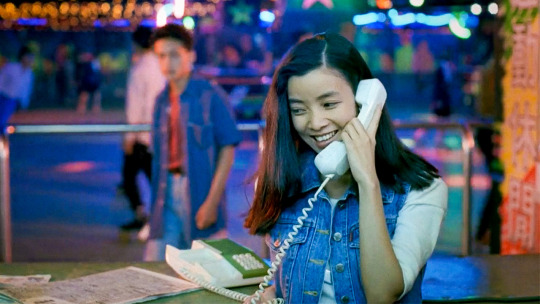
青少年哪吒
(1992) dir. Tsai Ming-Liang
★★★½☆
Antes de El sabor de la sandía, Tsai Ming-Liang dirigió Rebels of the Neon God en 1992, una película sobre Hsiao-Kang (Lee Kang-Sheng), el hijo de un taxista que busca venganza contra dos hombres que vandalizaron el coche de su padre y se enamora de Ah Tze (Chen Chao-jung).
La película muestra temas muy importantes como la madurez, lealtad, crimen y sexualidad, donde se presenta a un joven que se ve obligado a madurar para poder sobrevivir en Taipei.
Asimismo, Tsai prioriza el valor de la ciudad como un personaje de la trama, igual de importante que los ciudadanos, usando composiciones cinematográficas que ayudan a que el espectador se pueda familiarizar más con la cultura y estructura de la capital.
Tsai y Liao Pen-jung —cinematógrafo de la película— se toman el tiempo de apreciar y darle aún más importancia a la ciudad donde se encuentran los personajes; se presentan tomas que muestran la cotidianidad del taiwanés, especialmente explorando la cultura de los jóvenes como las locaciones donde suelen reunirse.
Considero que este cuidado al detalle y apreciación al paisaje de cemento hace que la película tenga un aire documental así agregando un valor auténtico y orgánico a todos los ingredientes que crean a Rebels of the Neon God.
0 notes